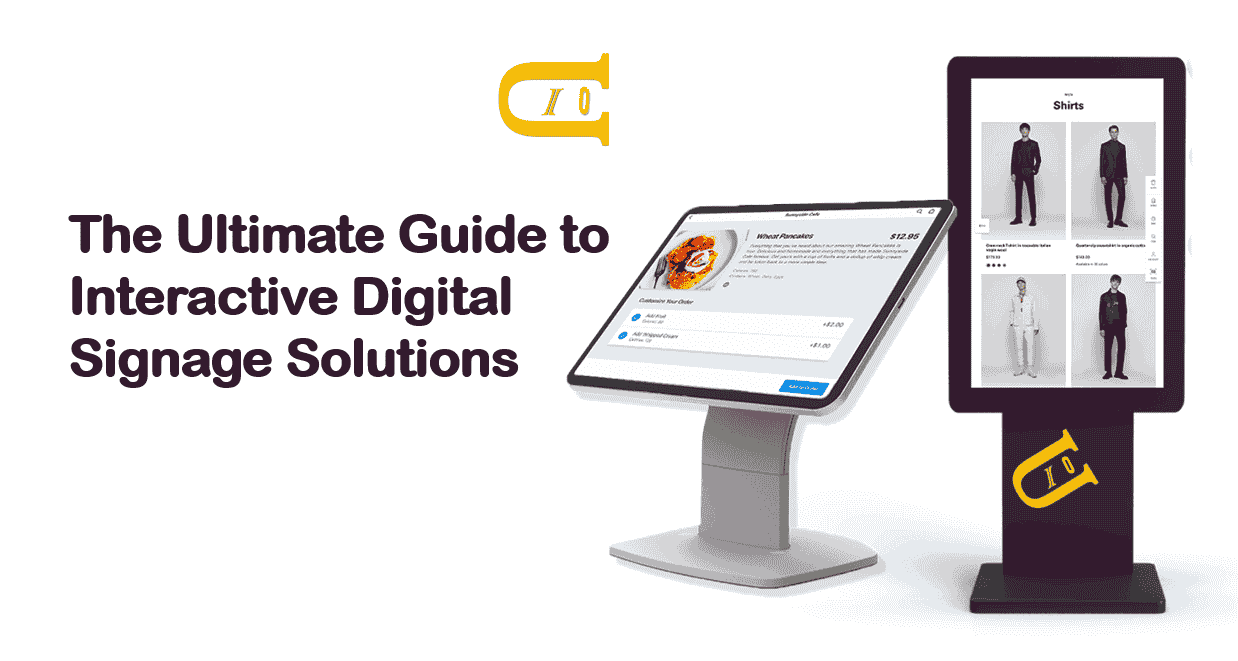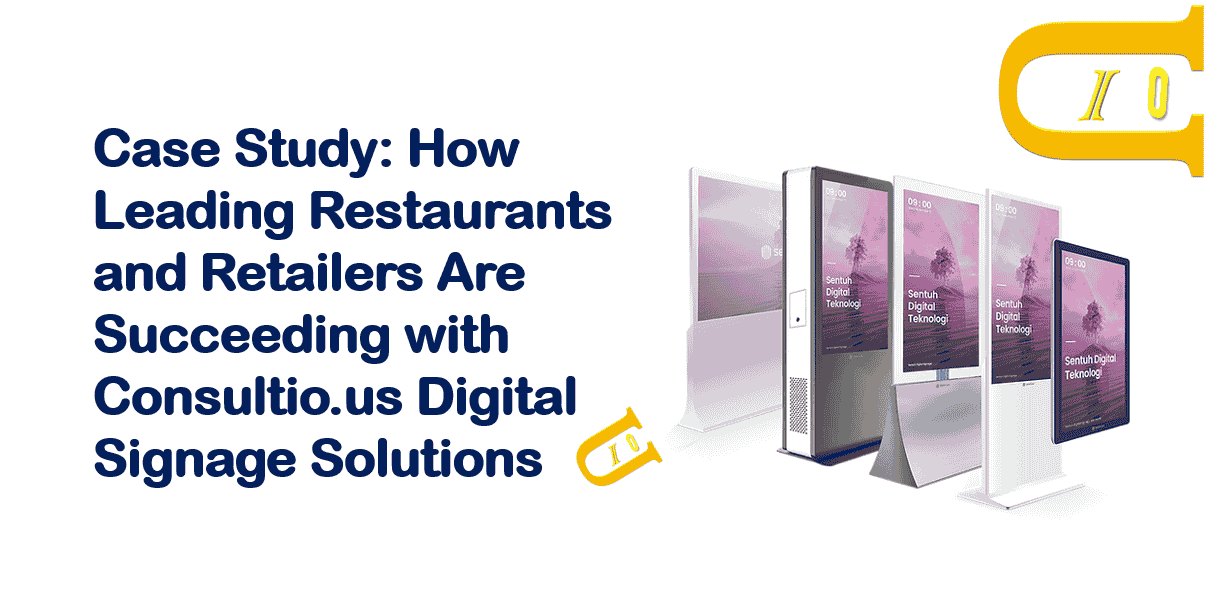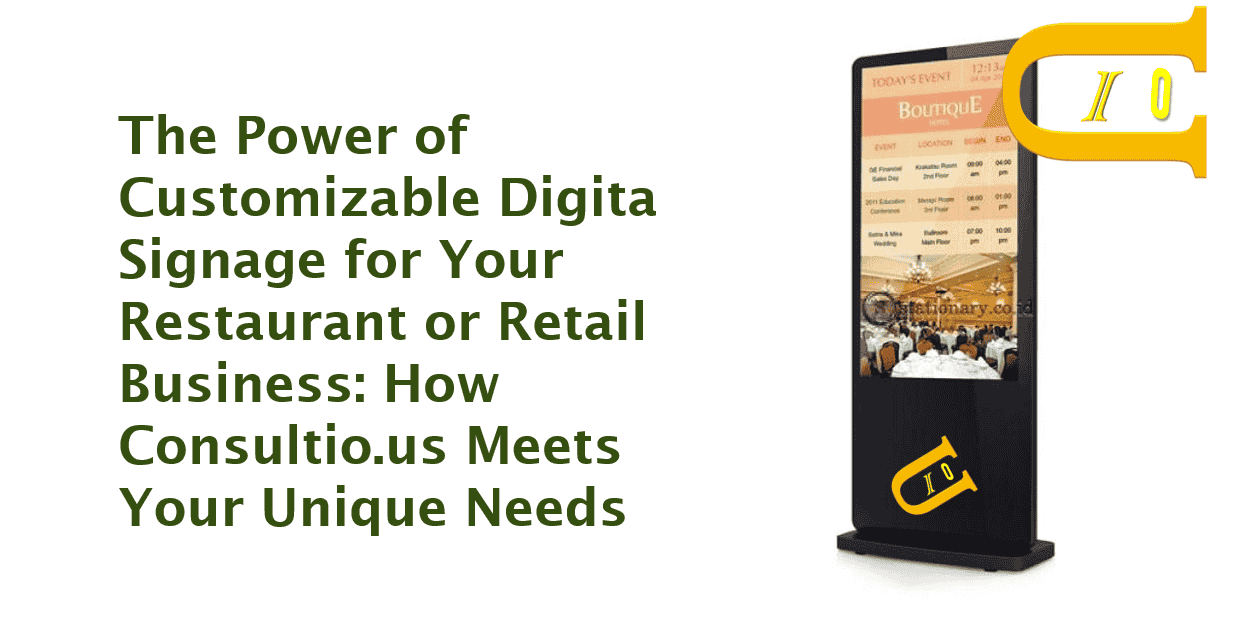The Ultimate Guide to Interactive Digital Signage Solutions

The Ultimate Guide to Interactive Digital Signage Solutions
In today’s fast-paced world, where technology and user engagement play pivotal roles in business success, interactive digital signage has become a game-changer. Whether it’s in retail, hospitality, corporate settings, or public spaces, interactive digital signage solutions are helping businesses connect with their audience in new, innovative ways. These solutions combine cutting-edge interactive display technology with dynamic content, creating an immersive and engaging experience for users.
In this ultimate guide, we’ll explore what interactive digital signage is, how it works, and the benefits of integrating this technology into your business strategy.
Table of Contents
- Introduction
- What is Interactive Digital Signage?
- How Interactive Digital Signage Works
- Key Benefits of Interactive Digital Signage Solutions
- Applications of Interactive Digital Signage
- Choosing the Right Interactive Digital Signage Solution
- Conclusion
What is Interactive Digital Signage?
Interactive digital signage refers to the use of digital screens or displays that allow users to interact with content in real-time. Unlike traditional signage, which simply displays static information, interactive digital signage enables users to engage with the content through touch, gestures, or even voice commands.
These displays are commonly used in places like retail stores, museums, airports, conference centers, and more. They can display various types of content, including videos, images, advertisements, news updates, maps, product catalogs, and more, while providing users with the ability to interact and get real-time information or perform specific actions.
How Interactive Digital Signage Works
Interactive digital signage works by combining hardware (such as touch screens, sensors, and displays) with sophisticated software. This integration allows the system to provide dynamic and interactive experiences for users. The technology behind it often includes:
-
Touchscreen Technology: This is the most common form of interaction, allowing users to touch the display to navigate through menus, make selections, or access information.
-
Gesture Recognition: Some systems use motion sensors or cameras to detect user movements, enabling interaction without physical contact. This is particularly useful in high-traffic areas where hygiene concerns may arise.
-
Voice Recognition: In some advanced systems, users can control the display or access information using voice commands.
-
Beacons and Proximity Sensors: These sensors allow digital signage to interact with users based on their location. For example, if a customer is near a particular display, the signage can offer personalized information or promotions.
-
Cloud-Based Software: Many interactive digital signage solutions are managed through cloud-based platforms, which allow businesses to easily update and control content remotely, schedule content, and analyze user interaction data in real-time.
Key Benefits of Interactive Digital Signage Solutions
- Enhanced User Engagement
The most significant advantage of interactive digital signage is its ability to engage users actively. Instead of passively viewing a message, users can explore content at their own pace, interact with information, and even make purchases or bookings directly through the display. This level of engagement is proven to capture attention more effectively than traditional signage.
- Improved Customer Experience
Interactive digital signage transforms the customer experience by providing instant access to information. Whether it’s a product catalog, a directory in a shopping mall, or flight schedules at an airport, users can find exactly what they need without waiting for assistance. This convenience boosts customer satisfaction and reduces friction in the user journey.
- Increased Sales and Revenue
In retail environments, interactive digital signage solutions can drive sales by providing product recommendations, offering discounts, or showcasing promotions. By offering a more personalized shopping experience, businesses can influence purchase decisions and encourage impulse buys. Interactive displays can also facilitate direct transactions, enabling customers to make purchases directly from the screen.
- Cost Efficiency
Interactive digital signage is a cost-effective solution in the long run. Unlike printed signage, which needs to be updated and replaced regularly, interactive displays can be easily updated with new content remotely, reducing the need for physical printing and manual labor. Moreover, cloud-based platforms allow businesses to manage multiple screens in different locations from a single point of control.
- Data-Driven Insights
With interactive display technology, businesses can gather valuable data on user interactions. Analytics can track what content users engage with most, how long they interact with the displays, and their preferences. This data can help businesses tailor their messaging, optimize content, and improve overall strategies.
- Sustainability
Interactive digital signage reduces the reliance on paper and other materials, making it a more eco-friendly option compared to traditional signage. This contributes to a business's sustainability efforts and helps reduce waste.
Applications of Interactive Digital Signage
Interactive digital signage can be used in a variety of industries, each benefiting from its ability to improve communication, enhance engagement, and streamline operations. Some of the key applications include:
1. Retail
In retail, interactive digital signage helps businesses create personalized shopping experiences. Interactive displays can showcase product details, allow customers to browse catalogs, and even place orders directly from the screen. It also enables retailers to display promotions and advertisements in a way that draws customers in.
2. Healthcare
Hospitals and healthcare facilities use interactive signage to provide patients with wayfinding solutions, access to services, and appointment scheduling. These systems help reduce confusion and improve the patient experience.
3. Education
Interactive digital signage is increasingly popular in schools, universities, and training centers. It can be used for educational content delivery, interactive lessons, event calendars, and even to display student information in an engaging way.
4. Corporate and Conference Spaces
In corporate settings, digital signage displays can be used to share company announcements, event schedules, meeting room availability, and wayfinding information. During conferences and events, interactive displays can provide attendees with real-time schedules, exhibitor information, and maps.
5. Transportation Hubs
Airports, train stations, and bus terminals benefit from interactive signage by providing real-time travel updates, wayfinding, and additional services like ticketing or lounge reservations. This improves operational efficiency and enhances the travel experience.
Choosing the Right Interactive Digital Signage Solution
When considering an interactive digital signage solution, there are several factors to keep in mind:
-
User Experience: Ensure the solution is user-friendly and aligns with your audience’s needs. Simple touch interfaces, clear navigation, and fast response times are essential.
-
Content Management: Choose a platform that allows for easy content creation, scheduling, and remote management. Cloud-based solutions are ideal for businesses with multiple locations.
-
Hardware Compatibility: Consider the type of displays and hardware you need. Ensure they are durable and can handle the level of interaction required for your business.
-
Integration: The signage solution should be able to integrate with other systems, such as point-of-sale systems, CRM platforms, and data analytics tools, to provide a seamless experience.
Conclusion
Interactive digital signage solutions are transforming the way businesses communicate with their audience. By leveraging interactive display technology, organizations can boost user engagement, improve the customer experience, and increase revenue. Whether you’re in retail, healthcare, education, or transportation, incorporating interactive signage into your business strategy offers numerous benefits that can set you apart from competitors and foster stronger connections with your audience. As technology continues to evolve, the potential for interactive digital signage will only expand, making it an invaluable tool for modern businesses.
Related Products
Here are some relevant statistics and facts you can include in the article to support the key points about interactive digital signage:
1. User Engagement
- 70% of consumers are more likely to engage with interactive content than traditional static content. (Source: Nielsen)
- Interactive digital signage has been shown to increase engagement by 47% compared to traditional signage. (Source: Digital Signage Today)
2. Customer Experience
- 42% of customers prefer self-service technologies like interactive kiosks in retail environments because they allow for quicker service and greater convenience. (Source: Retail Dive)
- 80% of consumers agree that businesses that use digital signage make them feel more connected to the brand. (Source: Digital Signage Today)
3. Sales and Revenue
- Digital signage has been found to increase sales by 32% on average when used in-store to promote products or services. (Source: Nanonation)
- Interactive digital signage in retail environments can increase conversion rates by up to 20% by allowing customers to engage directly with product information and promotions. (Source: MarketingProfs)
4. Cost Efficiency
- 70% of businesses report that the ability to update content remotely is one of the top benefits of digital signage. This saves time and costs associated with manual updates and printing. (Source: Intuiface)
- Businesses that switch to digital signage from print signage can reduce printing costs by 50% or more. (Source: Nanonation)
5. Data-Driven Insights
- Digital signage systems equipped with analytics can provide insights into customer behavior, helping businesses improve marketing strategies and content targeting. For instance, 30% of digital signage users leverage real-time analytics to adjust content and messaging dynamically. (Source: Invidis Consulting)
- 69% of marketers believe that digital signage delivers a higher return on investment (ROI) than traditional advertising methods. (Source: Digital Signage Today)
6. Sustainability
- By replacing paper and printed materials, digital signage helps businesses reduce waste and save resources. Companies can cut down on paper waste by over 50% when using digital signage solutions. (Source: Digital Signage Federation)
7. Industry Adoption and Growth
- The global interactive digital signage market size was valued at $22.2 billion in 2021 and is projected to grow at a CAGR of 7.4% from 2022 to 2030. (Source: Grand View Research)
- 64% of retailers are either planning to or already using digital signage in their stores to enhance customer experience. (Source: Statista)





